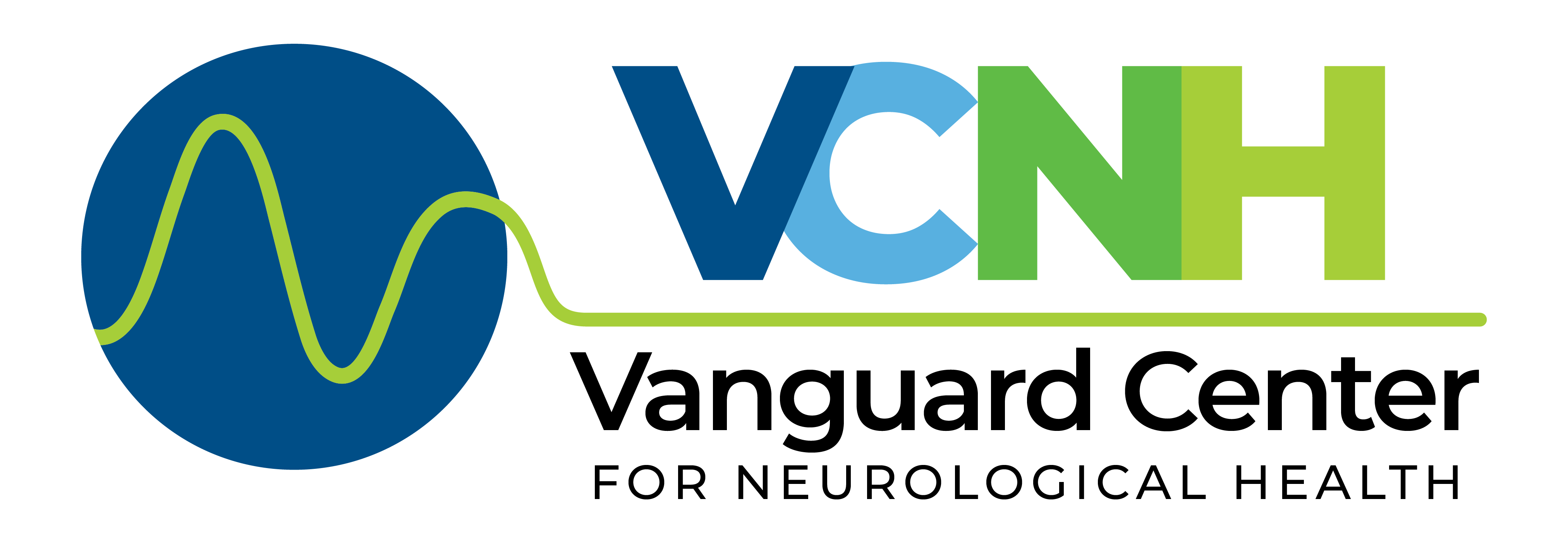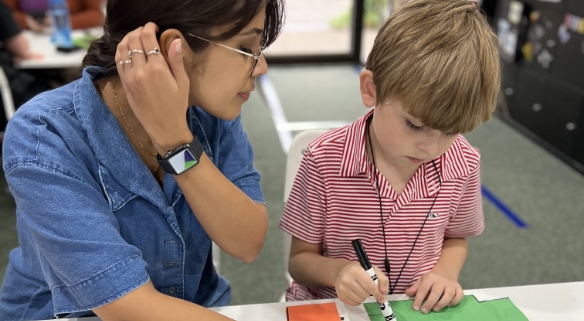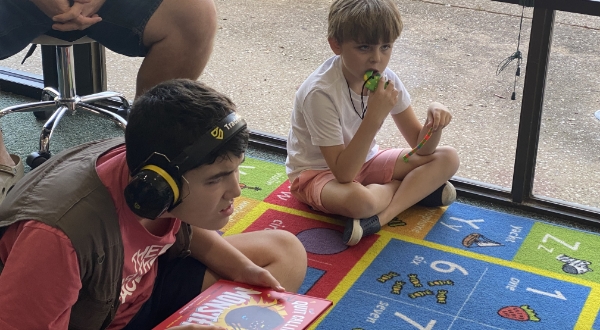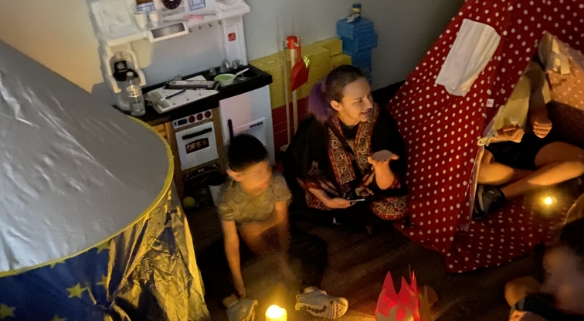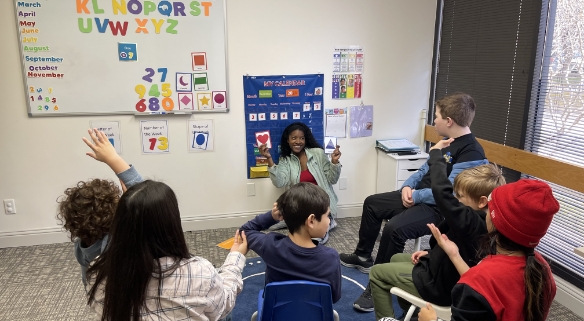What is ABA Therapy?
VCNH provides ABA therapy in the following settings:
- Clinic
- Home
- School
Programs target things such as:
- Challenging behaviors
- Social skills
- Communication skills
- Daily living skills
- Much more
ABA therapy can take place in a wide variety of settings including in-home, in center, and within the community. The location depends on what is most advantageous for the student and could potentially take place in all three settings. Programs can be comprehensive or focused depending on the needs of the student and could last a couple of months to across the lifespan of an individual depending on the severity of the disorder.
An ABA program will begin with an initial consultation, followed by an initial assessment, planning, and ongoing assessment to determine the appropriate goals for the student and the effectiveness of the goals and techniques used. Once the treatment plan is created therapists will be matched with the student and begin ongoing services. The BCBA conducts monthly to weekly supervision and parent meetings, depending on the need, to ensure and update the students plan accordingly and guide caregivers and staff in implementing the plan. Our plans include summaries of assessments, background on the student, techniques for preventing, managing, and teaching behavior, specific learning goals, and a fade out timeline. Our goals are to help the individuals we serve and their caregivers to lead happy, healthy, and productive lives.
Applied Behavior Analysis (ABA) is the scientific study of behavior and learning. ABA is defined as the science in which the principles of the analysis of behavior are applied systematically to improve socially significant behavior, in which experimentation is used to identify the variable responsible for the change in behavior. (Cooper, Heron, & Heward) In other words it is the use of techniques, such as positive reinforcement, and principles, how learning takes place, to bring about meaningful and positive change in behavior for the individuals we serve. Positive reinforcement is when something preferred follows a behavior and in turn that behavior is more likely to happen in the future.
ABA is endorsed as an effective treatment for autism by the American Medical Association, American Academy of Pediatrics, and the U.S. Surgeon General. Behavior analysts began working with young children with autism and related disorders in the 1960’s. Since then research has continued to produce well over 500 articles studying effective techniques for developing useful skills in learners from toddlers to adulthood.
One of the core features of ABA is that it is data based. With this therapy we create individualized goals for our students and take data on those goals to make sure that we are making meaningful changes for the individuals and the caretakers in the student’s life. We are able to tailor each treatment plan we write to the needs of the individual we are serving.



What makes VCNH Different?
Research has shown that when children are engaged in meaningful activities in natural settings, they more easily retain and generalize skills to novel situations. This is why VCNH uses Naturalistic Environment Teaching (NET), an evidence based method that incorporates learning opportunities into children’s social environments.
Less Structured
Our fluid teaching approach allows us to follow your child’s lead and make changes during therapy — even in the middle of an activity!
Focused on What Child Values
Because children can choose between multiple activities and may even use preferred personal items, they are more likely to remain engaged in their therapy sessions. This also helps build rapport and create a fun learning environment for both children and therapists.
Taught In Real World Settings
Essential social, language, cognitive, and motor skills are incorporated into community locations such as the home, park, or grocery store as well as school environments such as the classroom, playground, or lunchroom. Since skills are taught where they happen, they do not need to be generalized from artificial to authentic tasks.
How We Help
Home and Clinic Based Services
Clinic-based ABA (applied behavioral analysis) provides a structured setting and schedule. For children entering school, the clinic environment supports learning routines and skills necessary to succeed in the classroom. Bedtime routines, toilet training, and other daily activities can be addressed through home-based services.
Social Skills Training
Social skills help children make friends, develop relationships with their families and others in their environment, advocate for themselves, and safely navigate their world. Therapy goals may address taking responsibility for mistakes, asking someone to play, taking turns during a game, or identifying when someone is treated unfairly.
Functional Communication Training
The goal of functional communication training is to teach children that they can express their wants, needs, and ideas appropriately. This includes using oral speech, non-verbal communication (e.g., gesture, sign language), Augmentative and Alternative Communication (e.g., Picture Exchange Communication System, visual/picture communication, speech-generating devices), and other forms of communication. VCNH works in conjunction with your child’s speech-language pathologist to address their needs in this area.
Emotional Regulation
Emotional regulation begins by teaching children to first identify their emotions and then develop behaviors to respond to the demands of range of emotions.


Classroom Readiness
The VCNH Classroom Readiness Program empowers children with the skills and confidence needed for success in the classroom. By addressing individual needs through evidence-based ABA practices, our program provides a strong foundation for social, academic, adaptive, and behavioral success at school.
The VCNH Classroom Readiness Program is designed to prepare children for a successful transition into an educational setting. Grounded in the principles of Applied Behavior Analysis (ABA), this program focuses on developing essential skills, adaptive behaviors, and social readiness to ensure a smooth integration into a classroom environment.
The Classroom Readiness Program breaks the skills required to be in an educational setting into smaller, individualized goals based on your child’s needs. A lead RBT provides instructions to the group to simulate a classroom environment and familiarize the children with routines and structure. Children in the program work 1:1 with a Registered Behavior Technicians (RBT) on ABA goals. Over time, RBTs decrease direct support allowing your child to develop independence and autonomy.
Key Components of the Classroom Readiness Program:
- Assessment and Individualized Planning:
When your child begins ABA services, the BCBA conducts an initial assessment to identify a starting point for goal development to include social, communication, and behavioral goals. As part of this assessment, the BCBA identifies if a classroom readiness program is appropriate.
- Skill Development:
Targeted skill development is a core component of our program, encompassing functional communication, group instruction, peer interaction, and self-management skills.
Examples of goals include responding to instructions, attending to a task, raising hand when finished with an activity or when help is required, transitioning between activities, and orienting toward a speaker when instructions are given.
- Behavioral Intervention Plans:
Individualized Behavior Intervention Plans (BIPs) are developed to address any behaviors that may impede your child’s ability to succeed in a classroom setting. ABA therapists work closely with your child to teach replacement behaviors and strategies for self-regulation.
- Social Skills Development:
We place a strong emphasis on social skills development, including peer interaction, developing friendship skills, sharing, turn-taking, and communication with teachers and classmates.
Social stories, role-playing, and structured play activities are incorporated into your child’s daily routine to foster an interest in socializing as well develop the necessary skills to initiate and sustain these connections.
- Functional Communication:
Our program focuses on verbal and non-verbal communication to promote independence and help diminish frustration.
Examples of goals related to functional communication training include asking for a break, stating they are “all done,” requesting to leave an area, voicing a refusal, and raising hand when help is needed.
- Transition Planning:
Our structured transition plan and collaboration with school staff prepares children for success in an educational setting as well as continuity of any needed support. Session data is continually monitored in order to adjust your child’s program and ensure progress.


CONTACT US
ADDRESS:
4901 Lyndon B Johnson FWY Ste 150
Dallas, TX 75244
CLINIC PHONE:
(214) 256-6324
BILLNG PHONE:
(214) 853-1373
FAX:
(972) 884-0690
EMAIL:
info@vcnhdallas.com
BUSINESS HOURS
Should a client or client’s family require translation services for assessment, family training, and/or treatment, VCNH will arrange for the necessary translation services or let the client’s family know if it is unable to do so and offer other treatment options.
ABA & Clinic Hours | |
| Monday | 7:30 AM - 5:00 PM |
| Tuesday | 7:30 AM - 5:00 PM |
| Wednesday | 7:30 AM - 5:00 PM |
| Thursday | 7:30 AM - 5:00 PM |
| Friday | 7:30 AM - 5:00 PM |
ABA & Clinic Hours | |
| Monday | 7:30 AM - 5:00 PM |
| Tuesday | 7:30 AM - 5:00 PM |
| Wednesday | 7:30 AM - 5:00 PM |
| Thursday | 7:30 AM - 5:00 PM |
| Friday | 7:30 AM - 5:00 PM |
